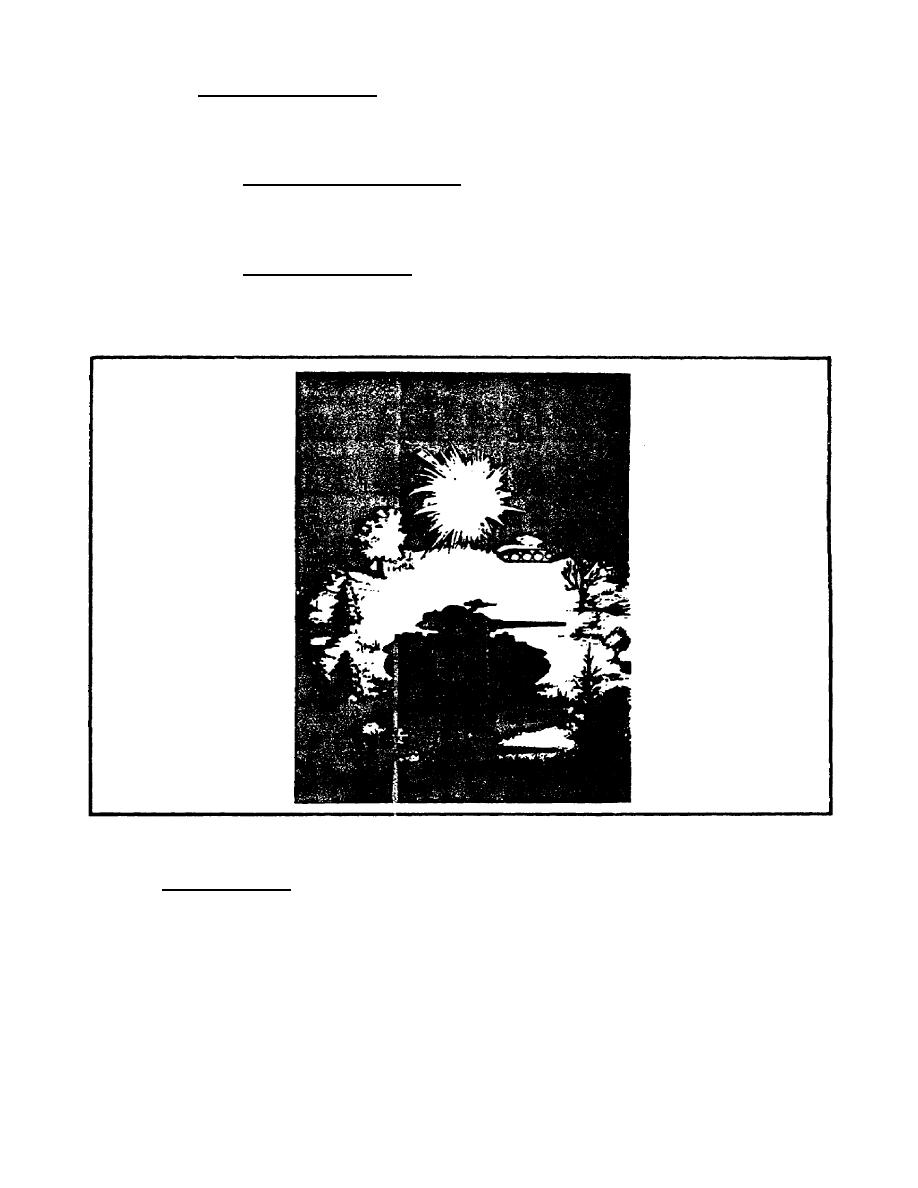
(4) Aerial perspective: The clarity of an
object and the shadow cast
by the object are perceived by the brain and used
as cues for estimating
distance. The factors used to determine distance
during periods of reduced
illumination are loss of discrimination and light
and shadows.
(a) Loss of discrimination. As you get farther from an object
discrete details become less apparent. For example, a town at a great
distance would appear as a single source of light, but as you approach it
the individual light of each building is discernible.
(b) Light and shadows. Every object will cast a shadow if there
is a source of light. The direction the shadow is cast depends on the
position of the light source. If the shadow of an object is toward the
observer, the object is closer than the light source (Figure 11).
Figure 11.
Light and shadows.
d. Visual Acuity. Visual acuity will be significantly reduced at
night. Because of this limitation, objects must be identified by their
shapes or silhouettes.
5.
METEOROLOGICAL EFFECTS ON NIGHT VISION
There are meteorological conditions that will affect vision at night,
therefore, changes in your ability to see may indicate the presence of
20


 Previous Page
Previous Page
